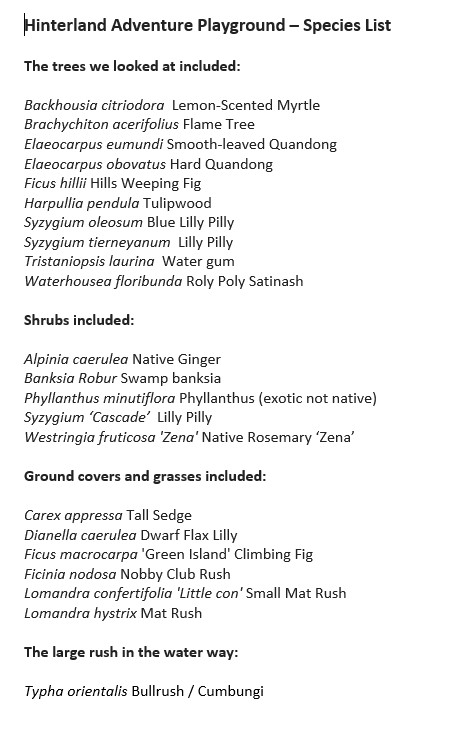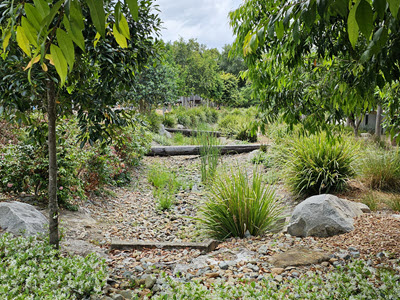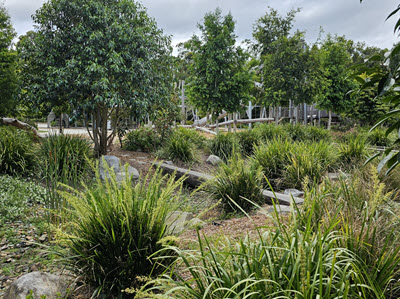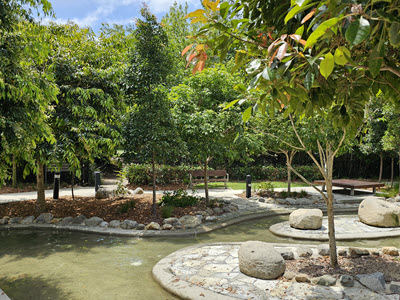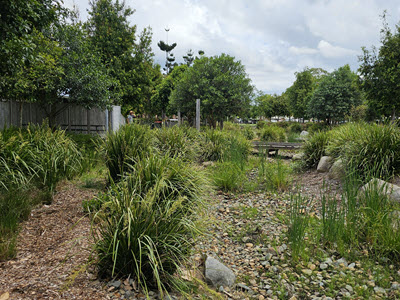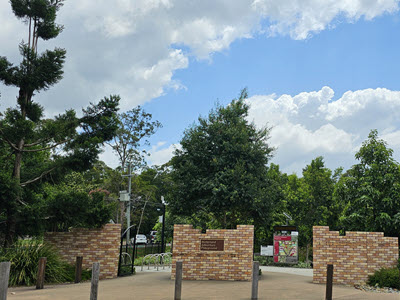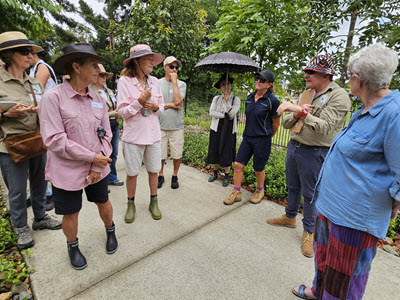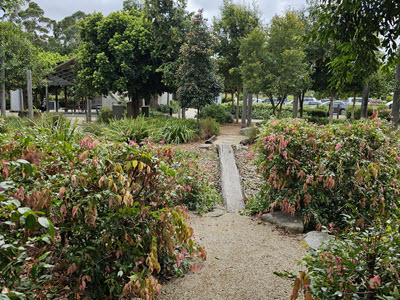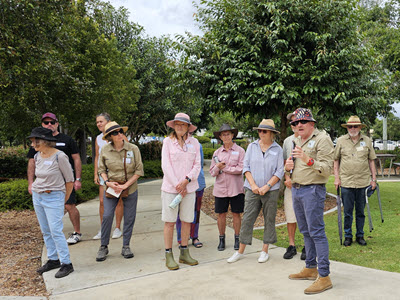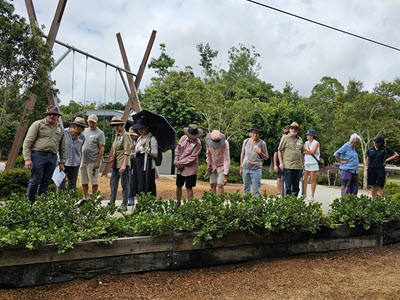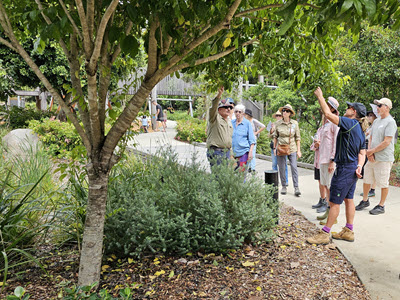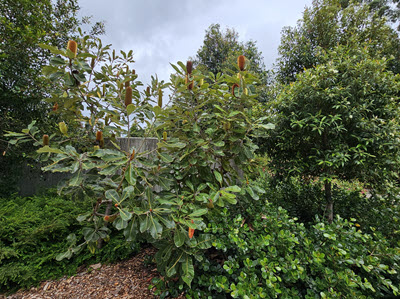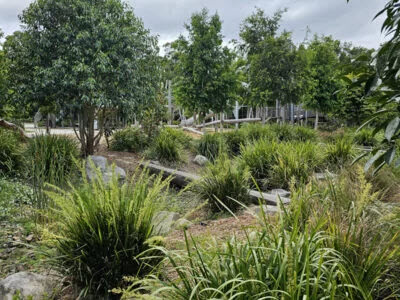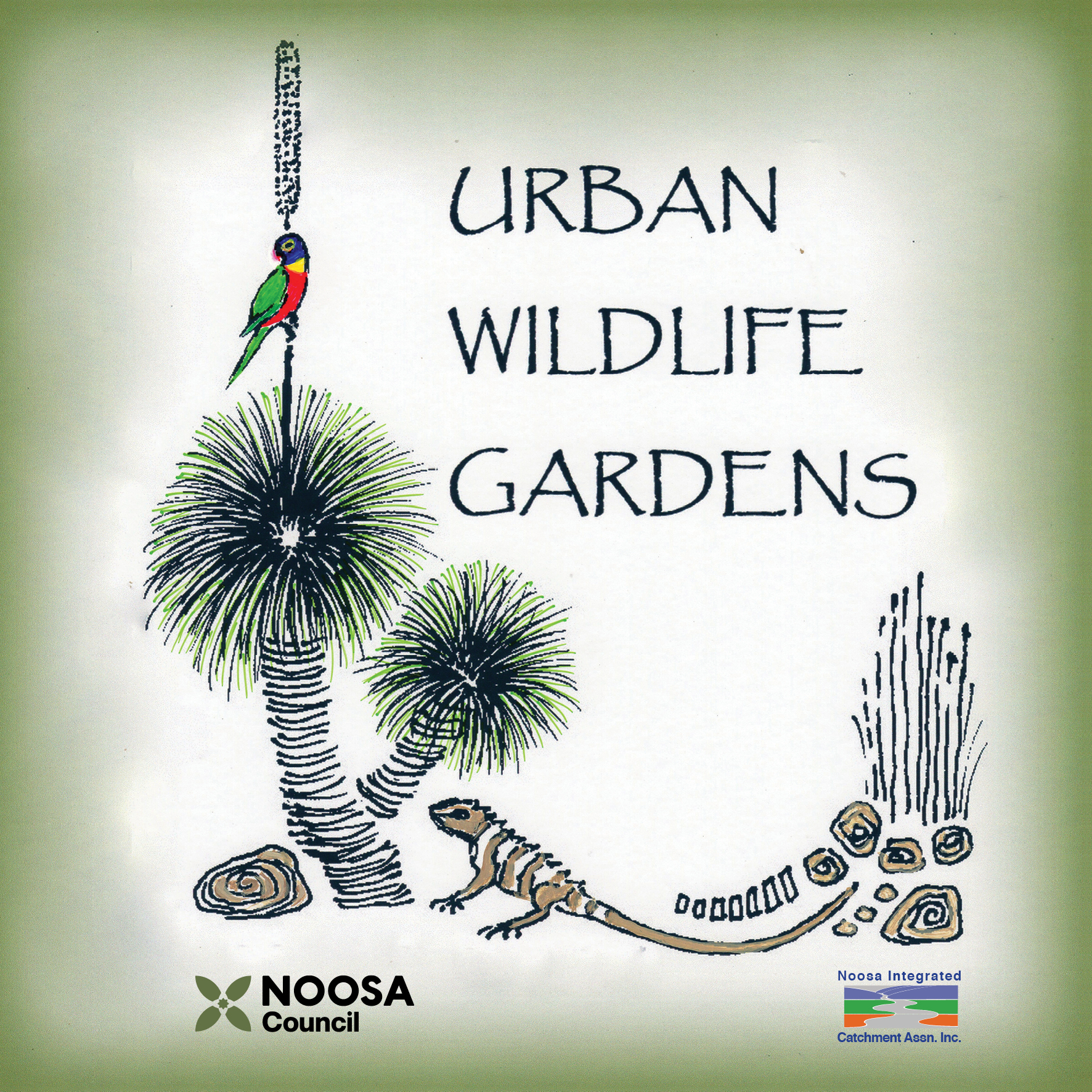The Hinterland Adventure Playground in Cooroy is a nationally award-winning landscape and playground. It’s been open for over two years and, as well as providing a nature based all abilities play area, it offers significant wildlife habitat adjacent to the riparian corridor of Cooroy Creek.
The UWG tour of the playground with Noosa Council staff, Jo Vale (Parks and Gardens) and Shaun Walsh (Infrastructure Services), was informative and relaxing. The sunny skies after days of rain made the morning even more enjoyable.
Shaun gave us some background information about the site. At peak production the combined Upper and Lower Mills in Cooroy were the largest producing mills in Queensland in the post World War II period. The mill was closed in 2000 by the State Government in accordance with the Regional Forestry Agreement and the site was transferred in 2002 to Noosa Council to be developed for the Cooroy Community.
A master plan was devised in 2006 which included revegetation of Cooroy Creek and redevelopment of the mill precinct including the Butter Factory Arts Precinct, the Lower Mill Site and the Cooroy Library.
The Noosa Hinterland Adventure Playground was finished in 2022 based on a design inspired by the manufacturing and agricultural past of the region. Cooroy Brickworks clay bricks are used at the entrance and industrial style installations have been included in the playground. These include electrical switches from Cooroy Brickworks installed on a panel near the metal rocketship made from stainless steel from the mill cooling tower.
During our tour Jo and Shaun spoke about the importance of making the playground a balance between safe design and activities that involve elements of risk and thrill. The design deliberately includes many logs which remained from the original mill site and these have been incorporated in the play areas as vertical structures and also as low bridges across the creek. The water playground is a favourite with children and has built in seating around the edge to enable comfortable supervision by adults.
Another important design concept is the importance of visibility and clear sightlines to ensure adults can easily see their children. To enable this, plantings are comprised of low shrubs and groundcovers with trees that have their lower branches pruned to leave the mid storey area open. Consideration is also given to emotional connections to the environment such as the scents, textures and colours in the sensory garden.
Jo and Shaun discussed the plant species used and the provision of habitat and food opportunities for local wildlife. Blue Lilly Pilly grows quickly to a medium size and provides lots of berries for birds. Water Gum is small, has nectar-rich flowers, is a food plant for native butterflies and provides a good nesting place for birds. Eumundi Quandong flowers profusely and Lemon Myrtle has beautifully scented leaves. Flame Trees shed their leaves allowing winter sun before producing masses of bright scarlet flowers with nectar for birds. They are also a host plant for the larvae of butterflies and the seeds are eaten by king parrots and regent and satin bowerbirds. A Weeping Fig growing in one spot is slowly developing lateral roots which will one day provide a wonderful natural play environment as well as a bird nesting site.
Planting trees close together and coppicing has helped to recreate a forest atmosphere and quickly provide shade. Tree size is restricted by proximity of other plants, root competition and concrete paths.
Understory plants are planted in drifts and include species such as Green Island Fig, Lilly Pilly, Banksia and Native Rosemary. Other grassed areas have been left open for more vigorous activities. Cooroy Creek, once over run by weeds, has been revegetated with natives and provides a beautiful backdrop behind the playground fence.
The playground experiences occasional water flow through it after rain and this is accommodated by a swale lined with rocks which directs the water to Cooroy Creek. The water course is planted with Lomandra, Knobby Club Rush and Bull Rush which filter rubbish and soak up nutrients washed off the nearby road.
It was inspiring to see how the landscaping techniques used in the playground integrate seamlessly into the surroundings and encourage visitor engagement with the environment. The participants on the tour were keen to ask lots of questions and learn how they can incorporate the landscaping and planting ideas into their own gardens. Conversation continued after the tour as we adjourned to the RSL for morning tea.
Thanks Jo and Shaun for a most enjoyable and interesting morning. Vanessa Presling
See species list below.
